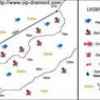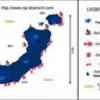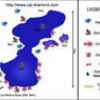
LST 282
Saint Raphael, France
Wreck
Diving in LST 282 is Interesting
You can find Interesting Typically, visibility is Medium ( 5 - 10 m)
The average depth is 6 m / 19.7 ft
To reach LST 282 you have to do it By boat & from shore
This dive site is best suited for All divers divers.
The LST 282 (Landing Ship Tank) was sunk August 15th 1944 by a German fighter. It stays in shallow water so take care of the swell!








Reviews (1)
Have you been in LST 282? Write a review: